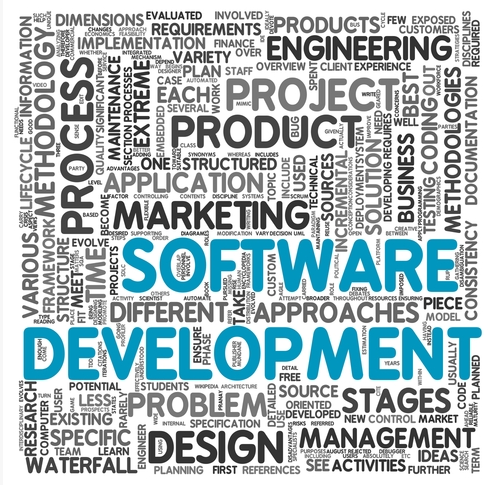
Digital content doesn’t just happen. Marketers require tools to get it done.
The range of software and tools serving content marketers has mushroomed in the past couple of years. As researchers and analysts at the Altimeter Group, we started looking at the space informally back in April, building a list of software vendors.
Currently, we’ve compiled a list of 75 vendors offering a range of content marketing software solutions. (It’s a list I plan to share officially in the fall, once it’s been through some winnowing.)
Content Software Landscape Research
In fact, we plan to go one better and conduct deep research into the content software marketplace, beginning next month.
Before we can begin that project in earnest, however, it’s critical to evaluate the actual content use cases marketers face in their day-to-day lives. There’s no realistic way we can evaluate the vendors in a very disparate landscape without knowing what marketers actually want and need out of content marketing solutions.
Let’s assume (and hope and pray!) the marketers in question are beginning with a content strategy. Let’s discount/disqualify related solutions such as social media management software, CMS, DAM and basic Web analytics packages.
The qualities we’re seeing across the content-specific software vendors that remain are (in no particular order) the following:
- Targeting/Audience Identification (Segmentation/Personas): Tools to help you identify who the target audience(s) is/are, where they are online, and the types of content that would attract them.
- Curation: Gathering, organizing and presenting existing content in a meaningful, attractive manner.
- Aggregation: Compiling and publishing syndicated Web content — generally more automated and less specific than curation (above).
- Workflow/Editorial Management: Tools that aid in processes associated with content strategy including creating governance documentation (style, editing and brand guidelines), content audits, production, review, approval and publishing processes, etc.
- Editorial Calendar: Sometimes included in workflow tools, sometimes a standalone feature.
- Discovery: Algorithmic suggestions for content readers might appreciate based on usage or social patterns.
- Syndication/Distribution: Tools that help content publishers find audiences via, for example, suggested headlines or stories across publisher sites or social networks.
- Recommendation: Services that use data such as usage patterns, social connections and browsing history to recommend content to users.
- Branded Content Creation: Generally offered by agencies and publishers, custom content for brands, products and/or services.
- Production: A wide range of increasingly complex services. As content moves into increasingly multimedia formats, as well as into new channels such as mobile, content production has moved far beyond “just blogging.”
- Content Generation: A small but growing set of tools are being developed to help marketers generate creative ideas for content by feeding them multimedia material that is on-brand and relevant to campaign goals.
- Collaboration Tools: Related to workflow and editorial management, these toolsets help disparate teams collaborate on different aspects of content creation, production and publishing, often from remote locations and with cloud-based assets.
- Tracking (Content Across Web): A handful of companies have developed tools that help marketers track both images and text across the Web no matter where they appear, and to dynamically update them.
- Analytics (Content-Specific): Independent of basic Web analytics packages, content tools often contain their own specific analytics and dashboards. These can be wide-ranging and are, of course, closely aligned with tool functionality.
- Real-Time Capabilities: An increasingly news and social media driven world drives demand for real- and near real-time information, a capabilities being built into an increasing number of tools in varying capacities.
- Push Notifications: You’ve got… content. Beyond email, some tools do enable alerts when new content is available.
- Talent Sourcing & Management: Writers, designers, photographers, videographers – tools exist to find them, have them submit their work and manage their billings.
- Templates/Layout/Design: From websites to infographics, design doesn’t just happen. There are, of course, plenty of standalone templates available. So, too, do content tool sets incorporate templates and design solutions.
- SEO: Written word content tools, in particular, sometimes incorporate search optimization features around keywords and phrases, metadata, headline optimization, etc.
- Predictive Analytics: Distinct from performance analytics, these tools predict how content will perform in specific channels or with certain audience segments. Currently aimed more at publishers than marketers, it will be interesting to see if this market shifts with broader adoption of content marketing.
- Influencer Identification: Brands such as Intel have proven owned content can achieve paid media reach when spread by the right influencers in a given field. Tools that identify influencers who can help spread messages in social channels are, therefore, growing in popularity with content marketers as well as with PR practitioners.
You can help get this first research project on the content software landscape off the ground by helping us to define what real use cases really exist. Are these accurate? What’s missing? What’s not necessary, redundant, or superfluous? What would your dream content solution do — or not do? Do you prefer working with a suite of à la carte solutions, or with a “stack” of seamlessly integrated software?
Please read the rest of this post on Marketingland, where it originally published.
